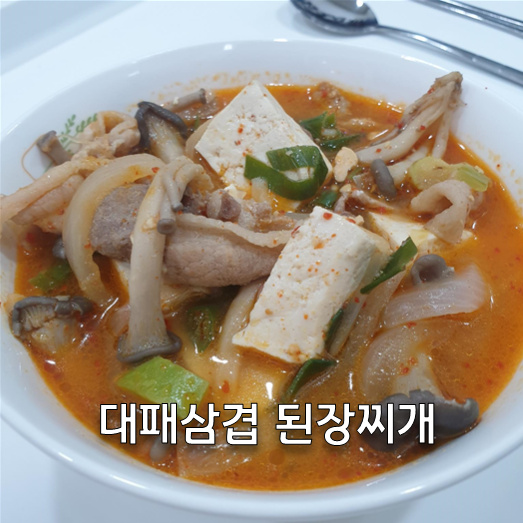Pork Belly Doenjang Jjigae (Korean Soybean Paste Stew)
Chef Baek Jong-won’s Signature Pork Belly Doenjang Jjigae!

This is my own delicious take on Baek Jong-won’s pork belly doenjang jjigae recipe, enhanced for even richer flavor! A comforting and hearty stew perfect for any meal.
Ingredients- 300g thinly sliced pork belly
- 3 Tbsp Doenjang (Korean soybean paste)
- 2 Tbsp Gochugaru (Korean chili flakes)
- 1 Tbsp minced garlic
- 2 medium potatoes
- A handful of oyster mushrooms
- 1/2 medium zucchini
- 1 block firm tofu
- 1/2 stalk green onion, thinly sliced
- 2 Korean chili peppers
Cooking Instructions
Step 1
Begin by stir-frying the thinly sliced pork belly in a pan over medium heat until it’s no longer pink. Once cooked, drain off most of the rendered fat to keep the stew clean and light.

Step 2
Add the doenjang (Korean soybean paste) and minced garlic to the same pan where you cooked the pork belly. Sauté them together for a minute or two. Toasting the doenjang enhances its nutty and savory depth.

Step 3
While the doenjang and garlic are sautéing, skim off any foam or impurities that rise to the surface. This step ensures a clear and refined flavor profile for your jjigae.

Step 4
Transfer the sautéed doenjang and pork belly to a pot. Add water and bring it to a boil. Once boiling, add the cubed potatoes, sliced zucchini, and oyster mushrooms. These vegetables will absorb the flavors and enrich the broth.

Step 5
I prefer adding the Korean chili peppers towards the end of cooking. This method preserves their fresh, spicy kick, resulting in a cleaner taste compared to adding them earlier. Slice them thinly according to your spice preference.

Step 6
Once the potatoes and zucchini are partially tender (about 5-7 minutes), gently add the cubed tofu and sliced green onions. Be careful not to break the tofu as you add it.

Step 7
When the stew comes to a rolling boil again, stir in the gochugaru (Korean chili flakes) and mix well. Let it simmer over medium-low heat until the potatoes are completely fork-tender and soft.

Step 8
Finally, taste the jjigae and adjust the seasoning as needed. You can add more doenjang or a splash of soy sauce to reach your desired flavor. Serve hot and enjoy with a bowl of rice!



